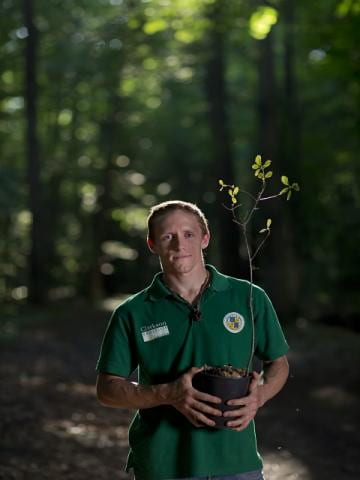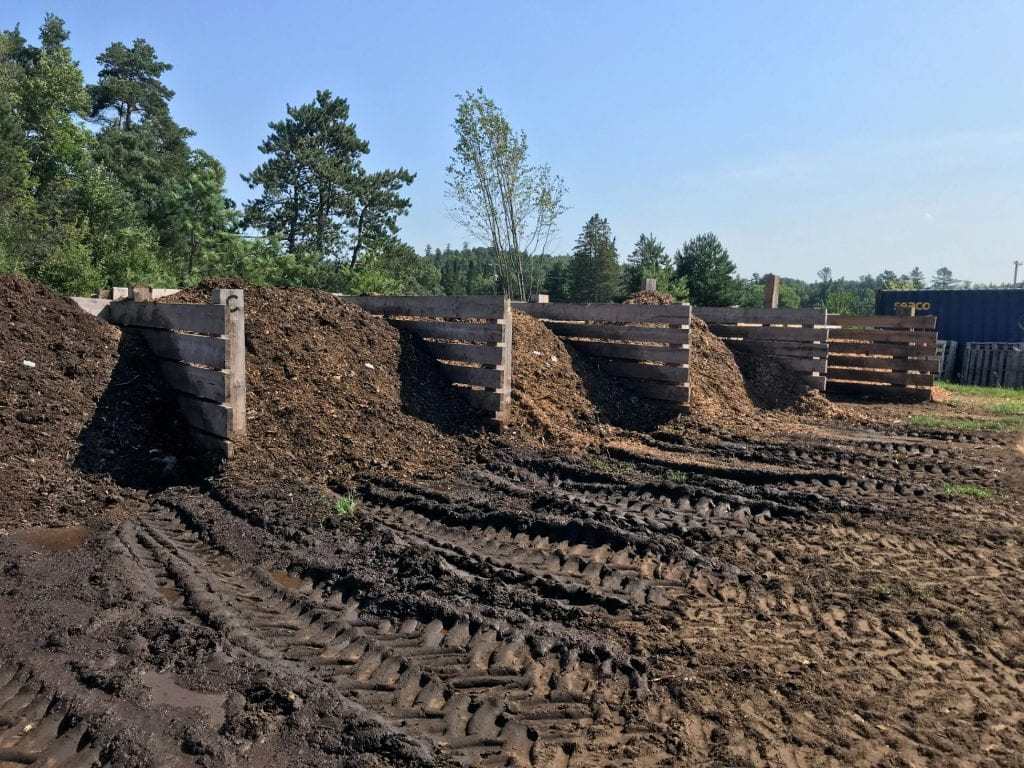We caught up with Alex French Clarkson University’s Sustainability Coordinator to ask about the recent food waste New York State mandate that went into effect on January 1st, 2022.

Can you share the backstory about the recent activities in NYS with Food waste diversion. How are ‘large generators of food waste’ defined?
Alex: The NYS Food Donation and Food Scraps Recycling Law went into effect in January of 2022. It defines large generators of food waste as companies or institutions that generate 2 tons of food waste per week. These entities are now required to donate edible food rather than throwing it out. If there is a food recycling facility (composting or anaerobic digester) available within 25 miles then inedible food is required to be sent there.
Why tackle food waste on a community level?
Alex: Tackling this environmental and social issue at the community level will give us the economies of scale to make food recycling viable. I like how NYS has structured this new law to have the larger generators get everything off the ground.
How did Clarkson become involved with this food waste diversion initiative?
Alex: This project was originally discussed by the Potsdam Climate Smart Communities Task Force. After deciding that we wanted to look into community-scale food waste management the task force asked Clarkson to take the lead. This became a win-win scenario for us because we were able to engage many students in the process through internships.

How much food waste does Clarkson generate on a weekly basis?
Alex: The DEC estimates that we generate 5 tons of food waste per week during the semester. We think this estimate is high. We are still trying to understand exactly how much food waste we generate. There are so many different sources of food waste on campus! We have good estimates of pre-consumer waste from kitchen prep work but we do not have a clear understanding of our post-consumer food waste from 2 of our 3 main dining areas nor for our residential areas. We hope to have a better understanding by the end of the semester.
What does Clarkson do with its food waste?
Alex: Clarkson has an anaerobic digester on campus. This system can process all of Clarkson’s pre-consumer food waste. We have to be careful to not allow any contaminants such as plastics into the system. By the end of this semester, we hope to be diverting all of our pre-consumer food waste to the digester. For other food waste sources, we have a small composting program. The food scraps are currently sent to a community garden. We are in the process of expanding that program so that it is standardized across campus. At that point, we will need to partner with a farm that is able to compost for us.

How does a farm need to prepare to accept food waste in Northern NY?
Alex: If a farm was going to accept food waste for composting they would need to do a little preparation to work with the DEC. This will include a run-off plan, proven buffers from water or residences, etc. There would also be a significant amount of planning on the hauling of the food waste, the price for managing the food waste, the process for managing the compost, etc.

Can you talk more about the relationship between the hauler and farms?
Alex: Some businesses do their own hauling. In other models, the hauler and the farmer are separate businesses. In the case that they are separate businesses the hauler would manage the customers and contracts. Food waste generators would pay the haulers. The hauler would then pay the farmer a tipping fee based on weight.
Have you seen successful collaborations in other communities between farmers, haulers and institutions?
Alex: Yes, there are many examples! We have spent a little more time looking at examples from Vermont where they are a few years ahead of NY in this context. Food waste collection is required throughout VT so many entrepreneurs have filled the niche that has been created.
How do we limit the amount of food waste produced? (What is the end goal when addressing community food waste?)
Alex: The EPA food waste hierarchy can answer this better than I can:

How much community food waste would you like to see be diverted?
Alex: It may be very difficult to compost 100% of our food scraps but nearly all of it can and should be diverted from the landfill. While this might seem like a stretch it is common practice in many parts of the world.
Lauren grew up in neighboring Vermont exploring and loving the green mountains and vast landscapes. Her undergraduate degree made her appreciate the communities that surround local foods and a Master’s Certificate in Food Studies from the University of Southern Maine made her want to pursue a career in the food system. In 2021 and 2022, she was the Local Foods Marketing and Development Educator for Cornell Cooperative Extension of St. Lawrence County.